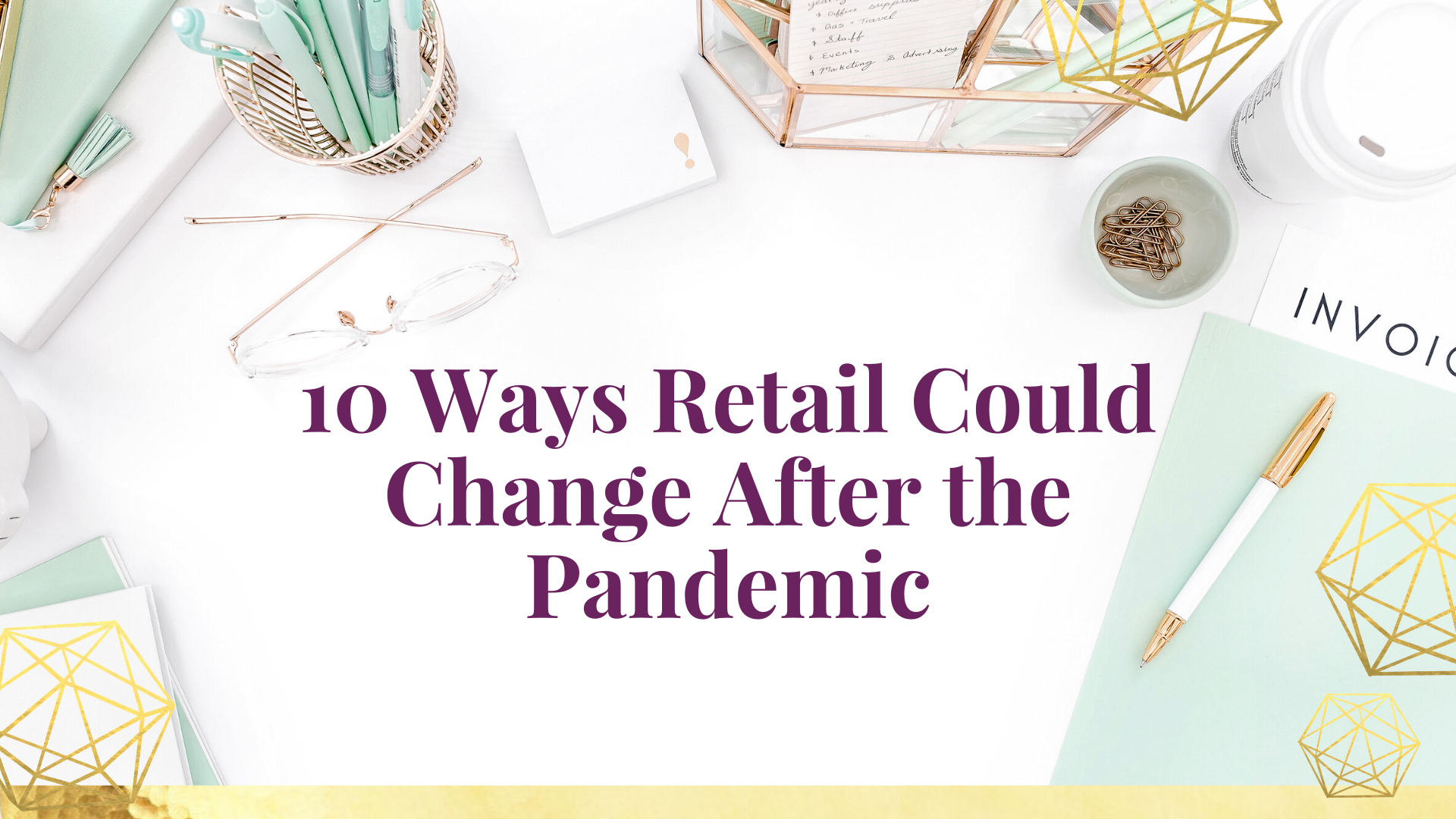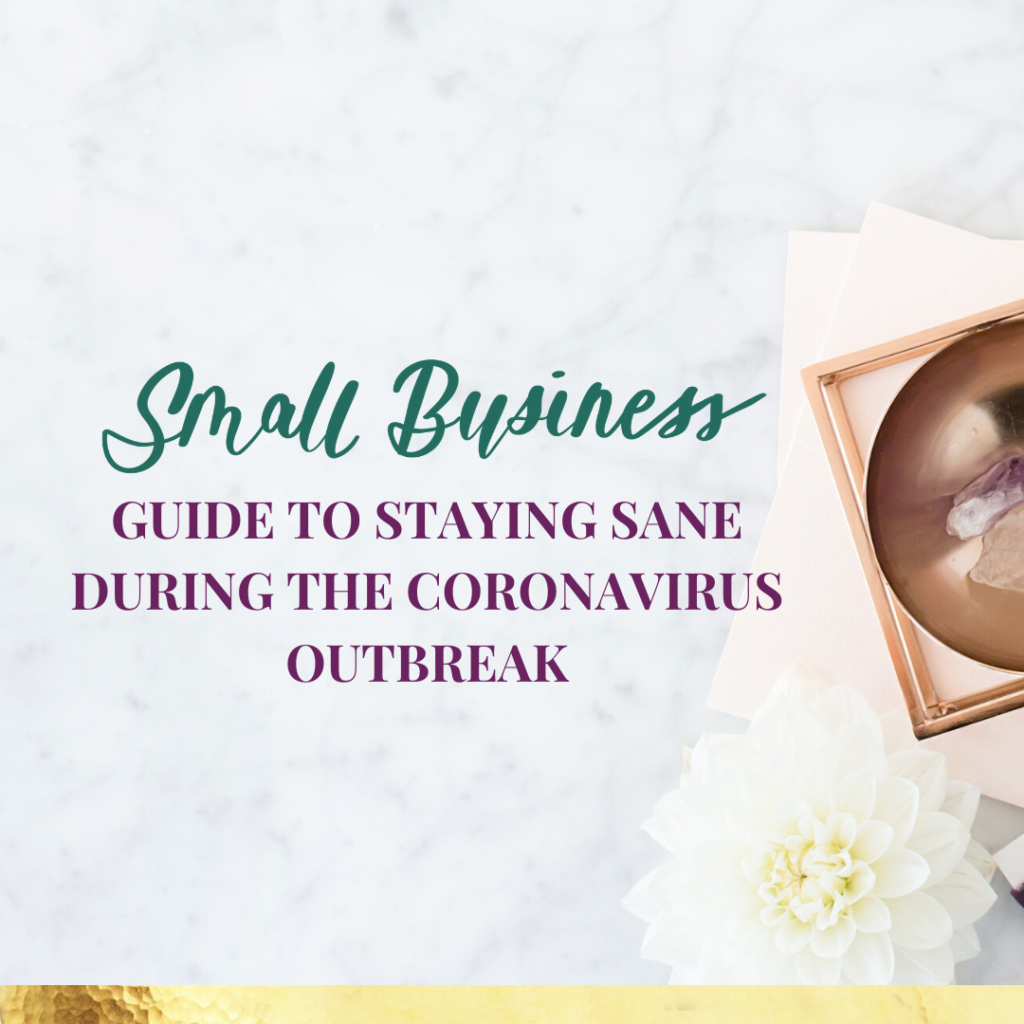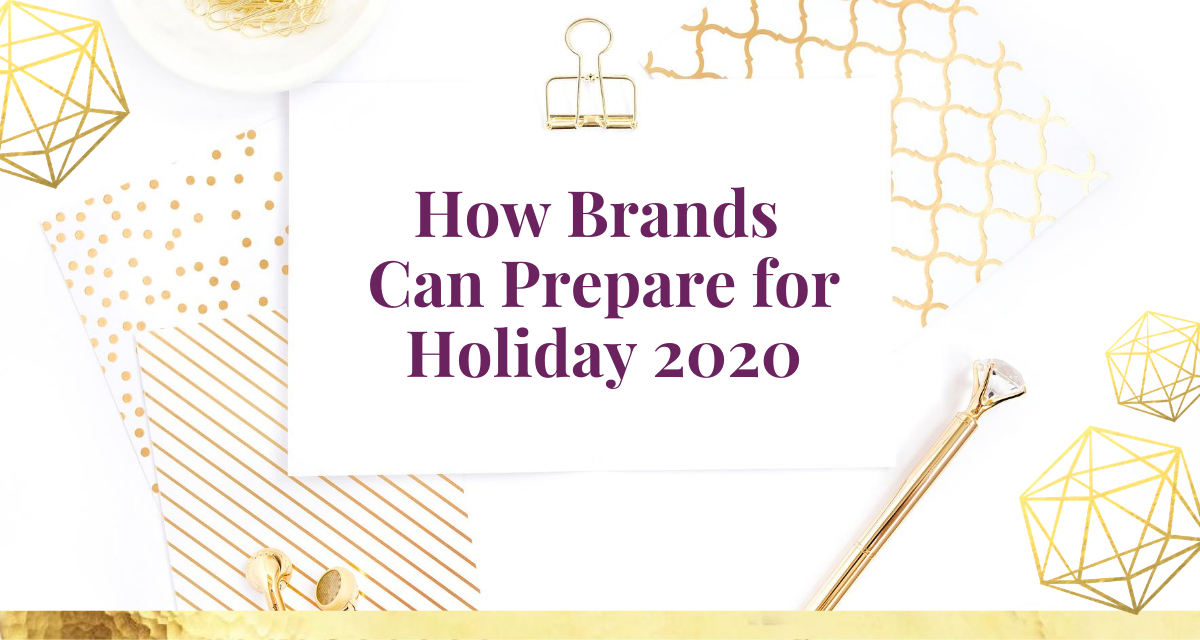It’s a post-Covid-19 world, and we are outlining 10 Ways Retail Could Change After the Pandemic. Remember when we could eat dinner in an elegant restaurant with an attentive waiter dutifully refilling our wine glasses when we got down to the last sip? Or when we gathered in stadiums for baseball games and gymnasiums for graduations? Or when we spent summers spread out on blankets on green amphitheater lawns jamming to live concerts? Damn it, 2020- why do you have to be so cruel?
It wasn’t that long ago, yet it seems like lifetimes ago. Coronavirus has changed our lives in many ways, and my community of artisans isn’t immune to the tsunami of pandemic-induced change. While I don’t have a crystal ball, I do keep a firm finger on the pulse of what’s happening in the marketplace. These are my predictions about how the future of retail will change in the age of Covid-19.
A SUSTAINED SURGE IN ONLINE SHOPPING
E-commerce jumped a whopping 49% percent in April of 2020, and I don’t anticipate that this is a “flash in the pan” trend. Several analysts have suggested that the pandemic hit the “fast forward” button on the America’s migration to online shopping by shaving 5-10 years off the timeline, specially now that customers can find coupons online, from websites like Raise. What does that mean for us? It’s time to get serious about building user-friendly, intuitive websites that elegantly present our brand. And it’s time to get serious about promoting those websites, too.
EVEN MORE EMPHASIS ON FREE SHIPPING

Amazon Prime has trained American consumers to expect free shipping, and we increasingly turning our noses up at hefty shipping fees. If you haven’t already, consider implementing either free shipping above a certain threshold or reasonable flat-rate shipping. Remember that free shipping is an incentive, and incentives are designed to get shoppers to act sooner or spend in larger sums than they otherwise would. I recommend calculating how much it costs to send an order of average weight and size across the country. Compare those shipping fees against your average order value, then find the magic number that encourages customers to spend more than they usually would to unlock free shipping while ensuring you don’t lose your shirt. That’s your free shipping “sweet spot!”
GREATER DEPENDENCE ON “BUY NOW, PAY LATER” SERVICES
As consumers feel the economic strain of the pandemic and ensuing lockdown, they’re exploring ways to fit coveted indulgences within their budget. Buy Now, Buy Later (BNPL) services enable shoppers to instantly apply for a small loan at checkout on your site. Essentially, a third-party vets the applicant, makes a quick lending decision, and manages the loan in its entirety while shielding your company from risk. You enjoy immediate payout in full, which means cash in your pocket now, and more accessible payment arrangements for those who want to support you. Interested in adding a BNPL service to your e-comm site? Check out Afterpay, Affirm, Klarna, or QuadPay.
SHOPPERS DEMANDING BETTER ONLINE EXPERIENCES

Take a look at your website and checkout process with fresh eyes. Is the navigation clear? Do the “add to cart” and “checkout” buttons pop off the page? Is the checkout process quick and intuitive? Are your product descriptions clear, complete, and compelling? Are there multiple product reviews for each product? Is your contact information easy to locate? While we might have been able to squeak by with anemic online experience pre-pandemic, customers are spoilt for choice online post-pandemic. It’s time for us to step up our e-commerce games to ensure that shopping with us is as intuitive and pleasant as possible.
INCREASED ENTHUSIASM FOR LOYALTY PROGRAMS
E-commerce loyalty programs reward shoppers with a variety of benefits. They offer tremendous flexibility for merchants who are eager to turn casual shoppers into loyal fans. Think: free samples with each order, point systems that earn free shipping or future discounts, and early access to new products. In the same way that savvy consumers consolidate their purchasing power to a single credit card that offers them the best benefits, shoppers are increasingly doing the same with their online purchasing power. If you don’t yet have a customer loyalty program, then now’s an ideal time to start one.
LESS ENTHUSIASM FOR TRADE CREDIT
Increased chances of credit default will likely weigh heavily on the minds of artisan brands in the coming months. That worry will translate to brand owners who are decidedly less eager to extend trade credit to their shopkeepers. On the flip side of the coin, independent brands may soon find that the economic uncertainty has impacted their ability to purchase raw materials and packaging supplies on trade credit. We’d be wise to explore other funding opportunities and keep as much cash-on-hand as possible to lengthen the runway for our small businesses.
DEPARTMENT STORES FALLING LIKE DOMINOES

American malls and their anchor department stores were struggling pre-pandemic, but the economic shutdown of 2020 may prove to be the death knell in their coffin. An acceleration of e-commerce, the public’s aversion to crowded indoor spaces, and a surge in closed storefronts will prove hard to overcome for American retailers. My advice? If department stores have been a primary facet of your wholesale strategy, then it’s time to build a Plan B. The sooner you diversify your distribution, the better!
FEWER TESTERS, MORE INDIVIDUAL SAMPLES
Though consumers are beginning to venture back out into the Main Streets of America, they’re continuing to exercise caution. Face masks, plexiglass shields at cash registers, and touchless payments are the new norm- at least for now. Another transition we’re likely to see: fewer store testers. Consumable products like specialty foods, candles, and personal care have long relied upon public testers to convert casual shoppers into paying customers. But with a heightened awareness of germ spread in communal spaces, product testers are likely DOA for the rest of 2020- and potentially beyond. I predict that the void will be filled by two things: technology to help consumers visualize how they’ll look in desired shades of foundation, lipstick, and blush combined with an increased demand for individual product samples.
BROADER INTEREST IN DROPSHIPPING FROM RETAILERS
Brick and mortar shops have a long road to recovery, and seasoned shopkeepers will be keeping a close eye on both cash flow and inventory. Dropshipping lies dead-center at the intersection of those two concerns, enabling retailers to stock less inventory, freeing up cash reserves that are desperately needed in the months to come. I recently published a blog suggesting how to set up a dropshipping program, and I recommend that every B2B strongly consider implementing a dropshipping program to keep their wholesale business on life support.
TRADE SHOWS FADING IN IMPORTANCE

Trade shows have struggled mightily over the last decade. Instagram has made it infinitely easier for buyers to connect with new brands without hopping on planes, ringing up spendy hotel bills, and traversing huge exhibition halls with concrete floors and fluorescent lighting. Wholesale marketplaces like Faire have accelerated the current evolution of wholesale buying, decreasing show attendance and disproportionate returns considering the sizable financial investments of participating in a trade show. I fear that Covid-19 could deal a potentially fatal blow to the trade show concept, as travel remains uncertain, and shoppers are less eager to mingle with a few thousand strangers from across the country. If trade shows have been a prominent prong of your distribution strategy, then it’s time to explore new avenues for connecting with buyers.
WHAT CHANGES DO YOU ANTICIPATE?
I’d love to hear what you’re seeing on the ground as a brand owner. How has your business changed in light of Covid-19? What changes do you anticipate int he world of retail? How will you be responding to those shifts? I invite you to leave a comment below to join the conversation.
Craving more actionable business advice? Hop on the Lucky Break mailing list to enjoy hot takes on business trends, resources, and strategies delivered free to your inbox twice a month. Team Lucky Break will be in touch soon!









Pingback: Ways Retail is Changing Post Coronavirus | Selling Wholesale To Gift and Retail Shops